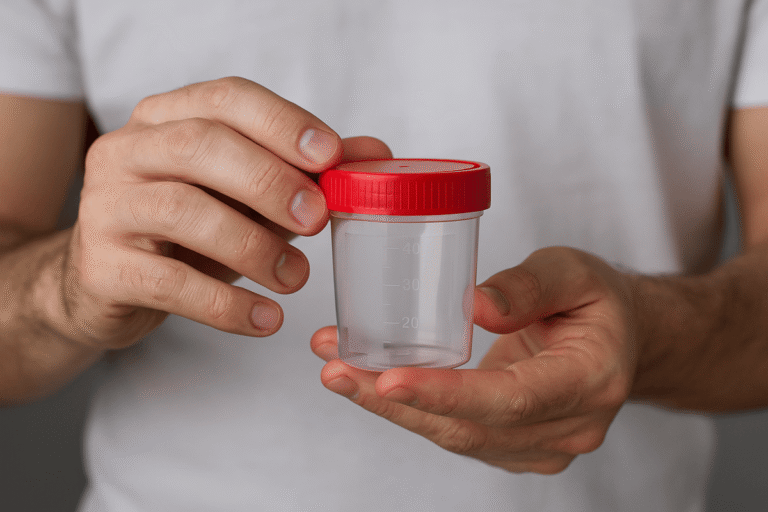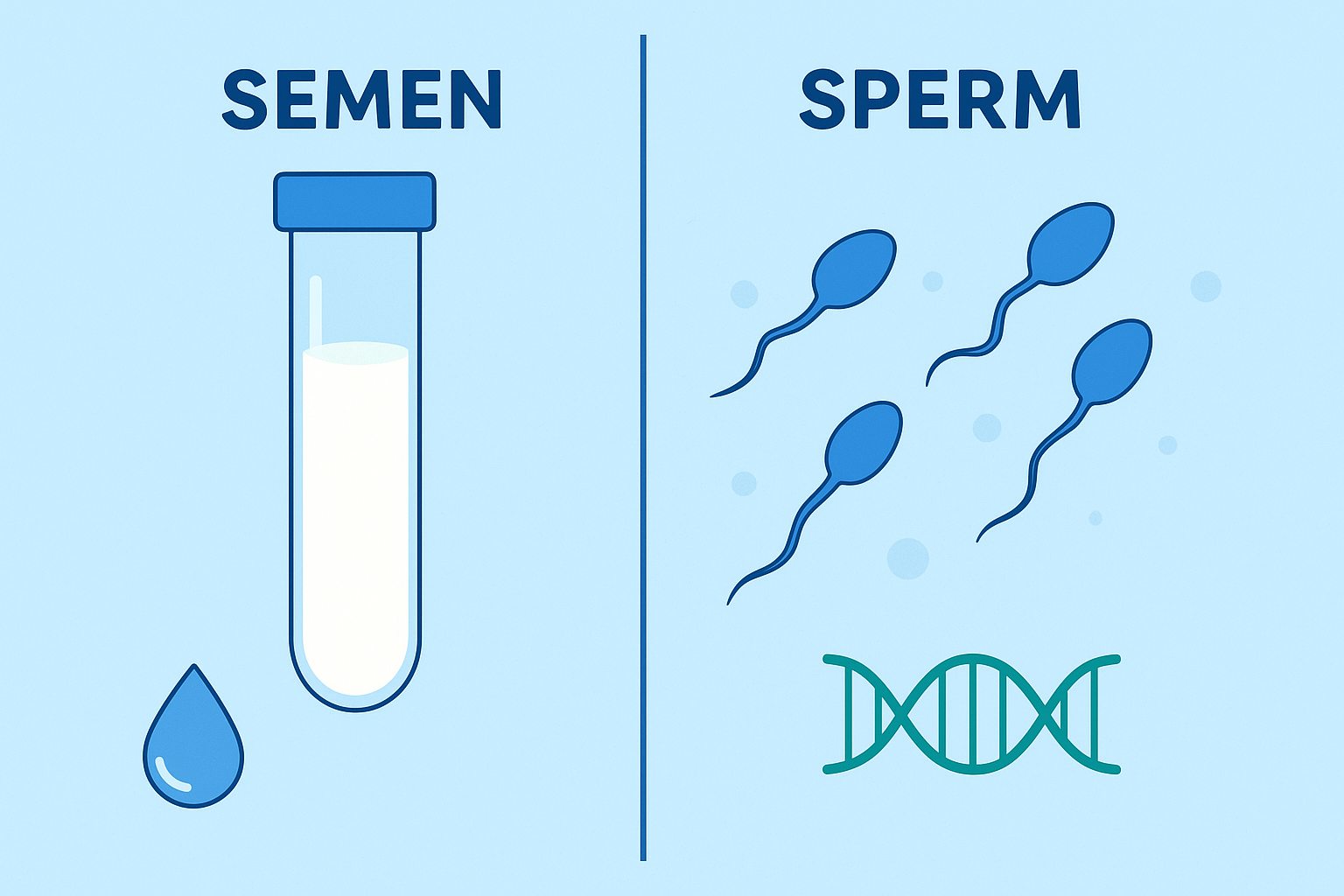Pregnancy is often described as a magical journey filled with excitement and anticipation. But let’s be honest — it’s also a time when your body surprises you in very unexpected ways. Like suddenly developing a nagging ache in your lower back that feels like it’s coming from your backside. If you’ve ever sat down and winced in pain — not from your back, but right at the base of your spine — you’re not imagining it. You could be dealing with tailbone pain, also known as coccyx pain or coccydynia.
And yes, it’s a real pain in the butt — literally.
Let’s take a closer look at what’s happening, why pregnancy can cause tailbone pain, and most importantly, what you can do about it.
Also read: GLP-1 Agonists in Preconception and Fertility Care
What Exactly Is the Tailbone?
The tailbone, or coccyx, is a small, triangular bone made up of three to five vertebrae at the very bottom of your spine. Think of it as the little anchor that sits just above your buttocks and behind your uterus. Even though it seems insignificant, the tailbone plays a key role in helping you balance when you sit and is a major attachment site for muscles and ligaments in your pelvic floor.
These muscles support your bladder, bowel, and uterus — which, during pregnancy, are doing a whole lot of extra work.
When the tailbone gets irritated, inflamed, or pressed on by your growing baby or your shifting pelvis, it can lead to sharp pain that makes everyday activities like sitting, standing, or even using the bathroom feel uncomfortable.
Why Does Pregnancy Cause Tailbone Pain?
Tailbone pain in pregnancy isn’t just common — it’s almost expected for many. Studies suggest that 50% to 80% of pregnant women experience some kind of lower back pain, and for nearly 10%, tailbone pain becomes a major issue.
Here are the key reasons why pregnancy can cause discomfort in your coccyx:
1. Hormonal Changes and Ligament Loosening
Pregnancy floods your body with a hormone called relaxin. As the name suggests, relaxin helps loosen up your ligaments and joints, especially in the pelvic area, to prepare your body for childbirth.
While this is necessary for delivery, it also means your joints are less stable and more prone to shifting — including around your tailbone. This lack of stability can strain the pelvic floor muscles and increase pressure on the coccyx.
2. Postural Shifts and Balance Changes
As your belly grows and your center of gravity shifts forward, your body naturally starts to compensate. This can lead to an arched lower back, a tilted pelvis, and poor posture overall — all of which increase tension in your lower spine and tailbone.
3. Pressure from Baby
By the third trimester, your baby is significantly larger and can physically press on your tailbone when you sit or move in certain ways. It’s like carrying a little weight that’s sitting on your spine — nonstop.
4. Constipation and Digestive Slowdown
Ah, the glamorous side of pregnancy. Hormonal changes (and sometimes iron supplements) can slow down your digestive system. When you’re constipated, pressure builds in your rectum — which sits just in front of your tailbone — leading to additional discomfort.
Also read: The Ultimate Guide to Artificial Insemination: Process, Success Rates
What Does Tailbone Pain During Pregnancy Feel Like?
Tailbone pain can vary in intensity and form, but many women describe it as:
- A deep, achy pain at the very bottom of the spine
- Pain that worsens when sitting or getting up from a seated position
- Discomfort during bowel movements
- Sharp stabs of pain when rolling over in bed or climbing stairs
Some may also feel pain during intercourse or when standing for extended periods.
When Does It Usually Start?
Tailbone pain often begins in the second or third trimester, as that’s when hormonal, postural, and pressure-related changes become more pronounced. However, some women feel it earlier, especially if they’ve experienced pelvic injuries in the past or had tailbone pain before pregnancy.
Strategies to Relieve Tailbone Pain During Pregnancy
Now, the good news: while tailbone pain may not completely vanish until after delivery, there are several safe and effective strategies to help manage and reduce the discomfort.
1. Perfect Your Posture
Your growing belly can throw your posture way off track. Overarching your lower back or slumping forward can aggravate coccyx pain.
Try this instead:
- Sit upright with your shoulders relaxed, feet flat, and back slightly curved.
- Avoid sitting with legs crossed or leaning to one side.
- When standing, keep your weight evenly distributed across both feet.
Tip: Use a mirror or record yourself to assess your posture; you might be surprised at how much you’re compensating without noticing.
2. Use a Special Seat Cushion
While a donut pillow might sound like a quick fix, it often shifts pressure to other parts of the pelvis.
Instead, opt for a wedge-shaped cushion or one with a cutout specifically designed to reduce tailbone pressure. These help you sit comfortably without direct contact on the coccyx.
Place it on your office chair, car seat, or wherever you sit the most.
3. Move More, Sit Less
Staying in one position, especially sitting, for too long can increase pressure on your tailbone. Try:
- Standing up and stretching every 30–45 minutes
- Using a standing desk if you work from home
- Taking short walks throughout the day to improve circulation and relieve muscle tension
Even gentle movement helps reduce stiffness and promotes better alignment.
4. Stretch and Strengthen the Pelvic Floor
Your pelvic floor is intimately connected to the tailbone. Doing gentle pelvic stretches, breathing exercises, or practicing prenatal yoga can ease the strain on these muscles.
A few stretches to try (with your provider’s okay):
Always be gentle and avoid anything that causes sharp pain.
5. Try a Pregnancy Pillow at Night
Sleeping with a pillow between your knees can help align your hips and reduce tailbone pressure while lying on your side. A full-body pregnancy pillow can offer additional support to your back and belly.
6. Manage Constipation Naturally
Keeping your digestive system moving smoothly will reduce rectal pressure and ease tailbone pain.
Here’s how:
- Drink at least 8-10 glasses of water per day
- Eat plenty of fiber-rich foods (fruits, veggies, oats, flaxseeds)
- Stay active with gentle daily movement
- Speak to your doctor about safe stool softeners if needed
7. Consult Your OB/GYN Before Taking Any Medications
While it’s best to avoid unnecessary medication during pregnancy, there are a few safe options for pain relief:
- Acetaminophen (Tylenol)
- Topical numbing patches
- Certain muscle relaxants (prescribed only when truly needed)
Never take anything, even over-the-counter without checking with your healthcare provider first.
8. See a Pelvic Physical Therapist
If your pain is intense or persistent, don’t wait. A pelvic health physical therapist can provide targeted relief. Therapy may include:
- Manual manipulation of the pelvic floor
- Tailbone release (internal or external techniques)
- Posture correction
- Myofascial release to reduce muscle tightness
They may also recommend a maternity support belt to stabilize your pelvis as your baby grows.
Will It Go Away After Birth?
In many cases, yes, tailbone pain resolves within weeks to months after delivery, especially if it was caused by hormonal changes and shifting posture.
However, for some women, the pain can linger, especially if the tailbone was bruised or displaced during labor and delivery. If pain continues postpartum, don’t hesitate to seek help from a pelvic floor specialist.
Also read: What to Do After Embryo Transfer: The Ultimate Checklist
When to Talk to Your Doctor
Call your healthcare provider if you:
- Have severe or worsening tailbone pain
- Notice numbness, tingling, or loss of control in your lower body
- Have trouble walking or balancing
- Can’t sit or stand without extreme discomfort
These could be signs of a more serious underlying issue, and early intervention matters.
Final Thoughts: You’re Not Alone — and You Don’t Have to Tough It Out
Tailbone pain during pregnancy may feel frustrating or even isolating, but it’s more common than you might think, and you don’t have to suffer through it in silence.
With a few mindful adjustments, targeted stretches, and the support of your care team, you can ease the pain and reclaim your comfort. Pregnancy may come with its aches and pains, but your well-being matters too.
So don’t ignore that twinge at the base of your spine. Take a deep breath, shift your posture, and know that relief is possible — one thoughtful step at a time.




